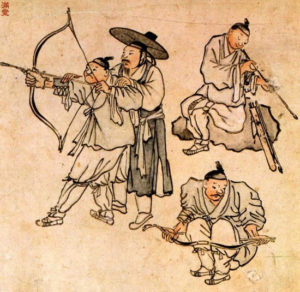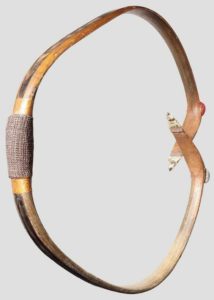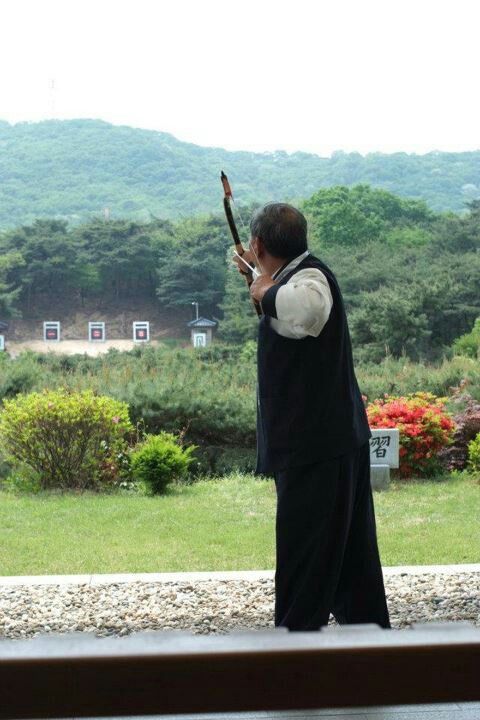Traditional Korean Archery
Traditional Korean Archery
Korea dominates modern-day Olympic archery, acquiring the most medals in the sport. This is no surprise as archery has been practiced in Korea for millennia. Their short, yet extremely powerful horn bow enabled the Koreans to defend their peninsula from the marauding barbarians to the North, the Chinese to the West, and from frequent raids by Japanese pirates coming from the South and East. The main military strategy of the Koreans revolved around the defense of Mountain fortresses. In order to counter the aggression and larger numbers of invaders, the Korean horn bow (known as a Gakgung) is designed with the intention of maximizing efficiency and range so the attackers could be dealt with before they got too close. Let us examine the Gakgung, the horn bow used in traditional Korean archery.

Gakung – extreme reflex horn bow
The Gakung is similar in construction to other Eurasian composite bows such as the Mongolian and Turkish bows; the core is bamboo with water buffalo horn joined to the belly. The siyahs are usually made from mulberry wood. The bows’ varied layers and parts are glued together with a natural adhesive derived from the swim bladders of particular fish.

What really sets the Korean bow apart is its geometry. When strung, it is relatively small and unassuming at first glance, but lurking within the bow is raw power and relentless efficiency. Unstringing the bow reveals the extremity of its reflex. The Korean bow nearly forms a circle with the tips of the siyahs nearly touching. Due to this extreme reflex, the Gukung has a long draw, with archers drawing well past the ear. The targets for traditional Korean archery are at a distance of 145 meters or greater. Modern Olympic distances range from only 30 to 90 meters.

The Three Kingdoms
The time from roughly 57 BC to 668 AD was known in Korea as the Three Kingdoms Period. Three competing kingdoms known as Silla, Baekje, and Goguryeo battled back and forth for supremacy for many centuries before the Kingdom of Silla eventually came to dominate in the 7th century AD, unifying Korea. The Silla employed a warrior class known as the Hwarang, a group of elite male youth, heavily influenced by Buddhism.

A Long History
The practice of archery would have been central to their military training and tactics. Later on in the 14th century, in what is now called the Chosun era, soldiers were chosen through military exams which heavily emphasized archery. If you were a good archer you would likely become a military officer and rise in society. Even today archery is subsidized by the South Korean government to ensure quality recruits to participate in the national sport, which is archery. It comes as no surprise, given the long history of traditional Korean archery, that they dominate the modern sport.
Traditional Korean archers utilize the thumb draw, pulling the bowstring well past the ear.
